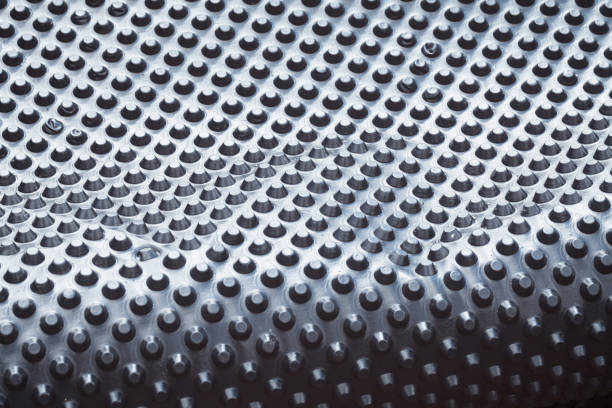1 Introduction
With the rapid development of the aluminum industry and the continuous increase in tonnage for aluminum extrusion machines, the technology of porous mold aluminum extrusion has emerged. Porous mold aluminum extrusion greatly improves the production efficiency of extrusion and also places higher technical demands on mold design and extrusion processes.
2 Extrusion Process
The impact of the extrusion process on the production efficiency of porous mold aluminum extrusion is mainly reflected in the control of three aspects: blank temperature, mold temperature, and exit temperature.
2.1 Blank Temperature
Uniform blank temperature has a significant impact on the extrusion output. In actual production, extrusion machines that are prone to surface discoloration are generally heated using multi-blank furnaces. Multi-blank furnaces provide more uniform and thorough blank heating with good insulation properties. Additionally, in order to ensure high efficiency, the “low temperature and high speed” method is often employed. In this case, the blank temperature and exit temperature should be closely matched to the extrusion speed, with settings taking into account changes in extrusion pressure and the condition of the blank surface. Blank temperature settings depend on actual production conditions, but as a general guideline, for porous mold extrusion, blank temperatures are typically maintained between 420-450°C, with flat dies being set slightly higher by 10-20°C compared to split dies.
2.2 Mold Temperature
Based on on-site production experience, mold temperatures should be maintained between 420-450°C. Excessive heating times can lead to mold erosion during operation. Furthermore, proper mold placement during heating is essential. The molds should not be stacked too closely together, leaving some space between them. Blocking the airflow outlet of the mold furnace or improper placement can lead to uneven heating and inconsistent extrusion.
3 Mold Factors
Mold design, mold processing, and mold maintenance are crucial for extrusion shaping and directly affect product surface quality, dimensional accuracy, and production efficiency. Drawing from production practices and shared mold design experiences, let’s analyze these aspects.
3.1 Mold Design
Mold is the foundation of product formation and plays a critical role in determining the shape, dimensional accuracy, surface quality, and material properties of the product. For porous mold profiles with high surface requirements, improving surface quality can be achieved by reducing the number of diversion hole and optimizing the placement of diversion bridges to avoid the main decorative surface of the profile. Additionally, for flat dies, using a reverse flow pit design can ensure uniform metal flow into the die cavities.
3.2 Mold Processing
During mold processing, minimizing resistance to metal flow at the bridges is crucial. Milling the diversion bridges smoothly ensures the accuracy of the diversion bridge positions and helps achieve uniform metal flow. For profiles with high surface quality requirements, such as solar panels, consider increasing the height of the welding chamber or using a secondary welding process to ensure good welding results.
3.3 Mold Maintenance
Regular mold maintenance is equally important. Polishing the molds and implementing nitrogenization maintenance can prevent issues such as uneven hardness in the working areas of the molds.
4 Blank Quality
The quality of the blank has a crucial impact on product surface quality, extrusion efficiency, and mold damage. Poor-quality blanks can lead to quality problems such as grooves, discoloration after oxidation, and reduced mold life. Blank quality includes the proper composition and uniformity of elements, both of which directly affect extrusion output and surface quality.
4.1 Composition Configuration
Taking solar panel profiles as an example, the proper configuration of Si, Mg, and Fe in the specialized 6063 alloy for porous mold extrusion is essential for achieving ideal surface quality without compromising mechanical properties. The total amount and proportion of Si and Mg are crucial, and based on long-term production experience, maintaining Si+Mg in the range of 0.82-0.90% is suitable for obtaining the desired surface quality.
In the analysis of non-compliant blanks for solar panels, it was found that trace elements and impurities were unstable or exceeded the limits, significantly affecting surface quality. The addition of elements during alloying in the melting shop should be done with care to avoid instability or excess of trace elements. In the industry’s waste classification, extrusion waste includes primary waste such as off-cuts and base material, secondary waste includes post-processing waste from operations like oxidation and powder coating, and thermal insulation profiles are categorized as tertiary waste. Oxidized profiles should use special blank, and generally no waste will be added when the materials are sufficient.
4.2 Blank Production Process
To obtain high-quality blanks, strict adherence to process requirements for nitrogen purging duration and aluminum settling time is essential. Alloying elements are typically added in block form, and thorough mixing is used to accelerate their dissolution. Proper mixing prevents the formation of localized high-concentration zones of alloy elements.
Conclusion
Aluminum alloys are widely used in new energy vehicles, with applications in structural components and parts such as the body, engine, and wheels. The increased use of aluminum alloys in the automotive industry is driven by the demand for energy efficiency and environmental sustainability, combined with advancements in aluminum alloy technology. For profiles with high surface quality requirements, such as aluminum battery trays with numerous interior holes and high mechanical performance demands, improving the efficiency of porous mold extrusion is essential for companies to thrive in the context of energy transformation.
Edited by May Jiang from MAT Aluminum
Post time: May-30-2024


